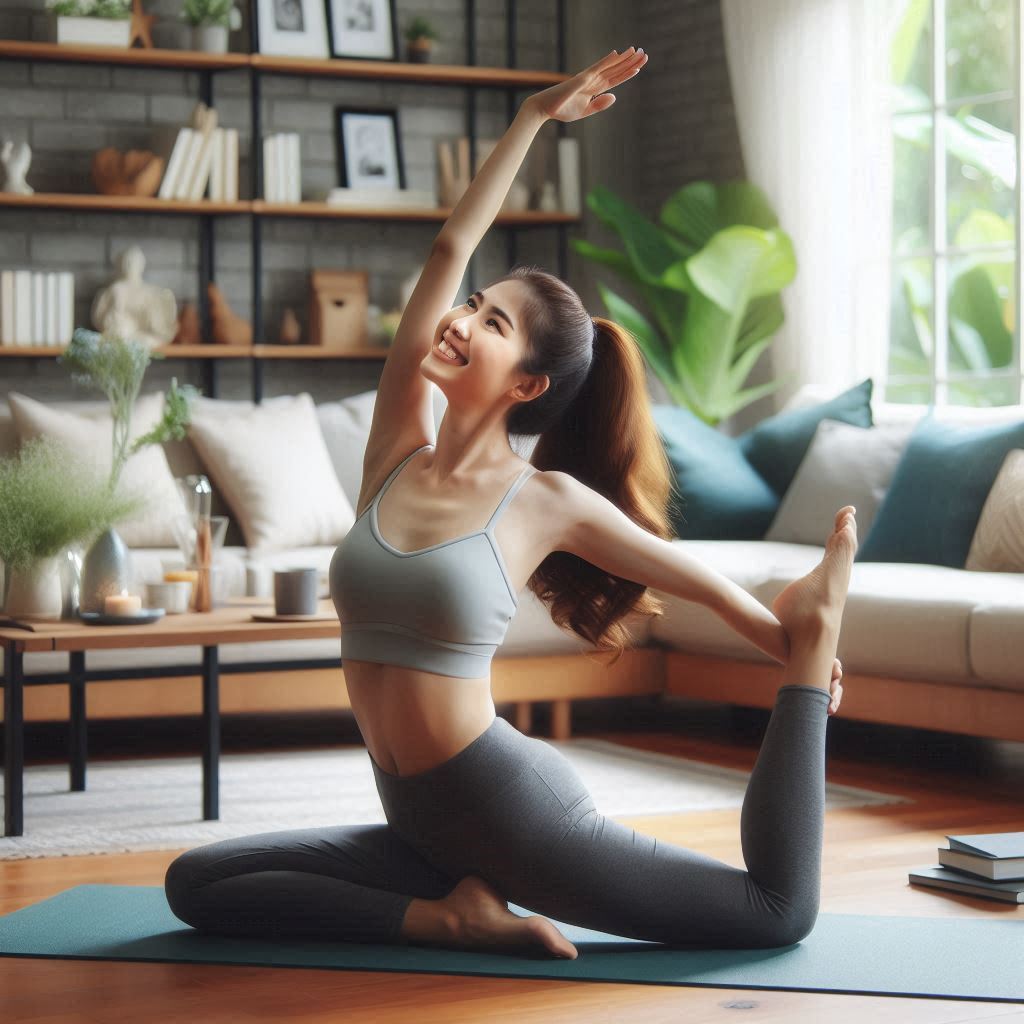
Yoga, with its deep-rooted origins in ancient India, has long been celebrated not only as a spiritual and meditative discipline but also as a remarkably effective physical practice that promotes flexibility, strength, and overall well-being; however, in recent years, it has gained increasing recognition among health enthusiasts, fitness experts, and even medical professionals for its substantial role in body sculpting, particularly in its ability to help lift, tone, and firm various parts of the body in a way that is both sustainable and low-impact. Through a combination of deliberate postures (asanas), controlled breathing techniques (pranayama), and mindful awareness, yoga targets multiple muscle groups simultaneously—engaging the core, legs, arms, back, and glutes—while also improving posture and muscular balance, leading to a more toned appearance that aligns with the body’s natural symmetry rather than forceful reshaping that some high-impact workouts might promote.
Furthermore, yoga helps activate and sustain engagement in deep-seated stabilizing muscles which are often underutilized in conventional exercises, thereby promoting a sleeker silhouette and improving muscle definition in a gradual, long-lasting manner, which is especially beneficial for individuals who seek to maintain lean muscle mass without adding bulk or placing excessive stress on joints and tendons. Poses such as the Warrior series, Downward Dog, and Plank not only strengthen the upper and lower body but also stretch and elongate muscle fibers, resulting in enhanced blood flow, detoxification, and skin firmness over time; when practiced regularly, yoga cultivates a body that not only feels stronger and more resilient but also looks visibly firmer, lifted, and proportionately shaped in a way that celebrates natural curves and alignment.
Postures That Lift and Sculpt the Body Naturally
Among the most effective ways yoga contributes to body firming and lifting is through specific postures that are designed to activate both superficial and deep muscle layers in strategic ways, creating a natural resistance training effect without the need for equipment or repetitive force. For instance, the Chair Pose (Utkatasana) targets the thighs, glutes, and lower back simultaneously, requiring the practitioner to maintain tension throughout the core while supporting the spine, thereby stimulating the muscle fibers responsible for creating a lifted lower body appearance; similarly, poses like Bridge (Setu Bandhasana) and Locust (Salabhasana) work to activate the posterior chain of muscles, leading to stronger glutes, improved spinal posture, and a firmer, more lifted appearance in the buttocks and lower back region, especially when held for extended durations with mindful breath engagement.
Additionally, standing balance postures such as Tree Pose (Vrikshasana) or Half Moon Pose (Ardha Chandrasana) demand continuous micro-adjustments from stabilizing muscles located in the legs, hips, and abdominal region, thereby toning and elongating those muscle groups while improving proprioception and bodily awareness; these poses help reduce fat retention in problem areas by increasing local circulation and metabolic activity, which encourages the body to use stored energy more efficiently. Engaging in sequences that involve upward and downward movements—such as transitioning from Downward-Facing Dog to Cobra and back—stimulates lymphatic drainage and core activation, both of which play significant roles in reducing bloating and encouraging a more compact, toned abdomen. Overall, these postures collectively support the reshaping and lifting of the body by emphasizing alignment, breath control, and sustained muscular effort in a calm and conscious manner.
Improving Skin Tightness Through Regular Practice
In addition to its muscular and structural benefits, yoga offers an impressive range of advantages for skin firmness and elasticity, which are often overlooked yet play a critical role in the appearance of a toned and youthful body; through consistent practice, yoga can significantly enhance blood circulation, ensuring that oxygen and essential nutrients are efficiently delivered to skin cells while simultaneously promoting the removal of metabolic waste products and toxins through improved lymphatic flow. This detoxifying effect is especially crucial for individuals experiencing sagging or loose skin, as it encourages natural regeneration processes and stimulates collagen and elastin production—the two key proteins responsible for maintaining skin strength, elasticity, and resilience over time—which in turn leads to a visibly firmer and more supple appearance across various parts of the body, particularly the face, neck, arms, and abdomen.
Moreover, the reduction of cortisol—the body’s primary stress hormone—through yoga’s meditative breathing techniques has been directly linked to decreased signs of aging and improved skin quality, since chronic stress is known to degrade collagen and disrupt hormonal balance, both of which contribute to skin laxity and fat accumulation in undesirable areas. By lowering systemic inflammation and balancing hormones naturally, yoga creates a holistic internal environment that is conducive to skin rejuvenation and structural integrity. Certain inversions, like Shoulder Stand (Sarvangasana) and Legs-Up-the-Wall Pose (Viparita Karani), are especially beneficial for promoting venous return and improving the complexion, firmness, and hydration of the skin. With time and dedication, practitioners often find that their skin not only appears tighter and more youthful but also glows with vitality and health from within, reflecting the balanced internal state fostered by regular yoga sessions.
Building Long-Term Body Confidence and Balance
One of the most profound and lasting benefits of practicing yoga for body sculpting is the development of a deep and enduring sense of body confidence and self-appreciation that extends far beyond physical appearance, cultivating a harmonious connection between one’s inner state and outward form; this confidence is not derived solely from achieving a certain size or shape but rather from the understanding, respect, and acceptance of one’s body as a powerful, capable, and evolving vessel. As practitioners begin to notice improvements in strength, flexibility, and posture, they also experience an increase in self-awareness, self-discipline, and emotional equilibrium, all of which contribute to a more positive body image and a healthier relationship with movement and nourishment. Yoga encourages individuals to tune in to their bodies’ unique rhythms and limitations, making it easier to set realistic goals and acknowledge progress with compassion and patience.
Furthermore, the holistic philosophy behind yoga—which integrates mental clarity, breath control, and physical expression—provides practitioners with tools to manage emotional eating, stress-related weight gain, and poor body image, replacing these detrimental patterns with habits that nurture and elevate physical and mental health. Over time, the disciplined yet gentle nature of yoga fosters resilience and mindfulness that extend into daily life, empowering individuals to make choices that align with their goals for long-term vitality and well-being. This mental transformation supports sustained physical results by creating consistency in practice and motivation, ultimately leading to a more balanced, toned, and harmonious body that reflects the internal peace and strength cultivated through yoga’s comprehensive and integrative approach to wellness.




